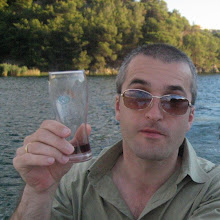- Solutions for a shrinking planet
Ever since Greenpeace bought a piece of land on the site of the proposed third runway at Heathrow airport, London, they have been receiving suggestions for what to do with it. They have already established an allotment and are planting an orchard, but now they want to go one step further and for that they want to get ideas.
They want to see how the Airplot could be fortified, so that, if the police and the bulldozers come to turf people out, they will be able to physically block the construction of a new runway. Hopefully it will never come to that, because there's no way a new government can continue to support the runway plans, but it's good to be prepared.
Deadline 23rd April, 2010; see the brief:
STRATEGY
Towards the goal of inhibiting and ultimately preventing the construction and operation of the ‘third runway’. Develop and adopt a multi-strand approach to run both concurrently and consecutively, to include both physical, legal, political and temporal aspects.
Others will submit proposals of how the actual building itself will be laid out and constructed, but this is only the most salient part of what should be a much broader strategy. It is this that I have tried to consider, and offer this submission as a complementary piece.
Use time as a factor. As it will be possibly decades before physical runway construction may begin, this allows for complex legal and planning hurdles to be set up, and time for trees and wildlife habitats to establish.
LEGAL
Invoke as many legal hurdles as possible; but not ones that will need defending by Greenpeace in court.
Establish a community on site of residents/ workers and afford them tenure with the highest legal protection possible, to draw out the legal eviction process. Make an established community of international importance and significance, perhaps an eco-community.
Take full advantage of Planning law – both of runway process, but also permissions of Airplot construction, which needs to be achieved quickly. Anticipate moves that may be made by others to delay this, which will prevent nature-based strategies coming to maturity.
POLITICAL
Work towards removing political will to proceed with the development.
Fund research into alternative sites for Heathrow in its entirety, eg Thames river mouth, which could have benefits of reduced flooding for whole Thames estuary, with added bonus of protected flood zones/ wildlife habitats.
Nurture empathy of public. Millions of people affected directly by noise overhead.
Cultivate dialogue and debate:
- Do we really need more planes? People can usually get flights whenever they want, so the argument is only of the economy, but who does that really benefit?
- How to reduce environmental impact, rather than focus on blame and responsibility that undermines efforts to improve the environment.
Investigate possibility of airport authorities developing alternative runway sites around Heathrow, which could circumvent everything planned and achieved on Airplot site.
PHYSICAL
BUILDING – central building
Multi-nodal building complex, with one very obvious, centrally placed landmark to draw focus and attention away from other, more important, sections underground. Each part capable of independent existence and functioning.
Time consuming and expensive construction that is difficult to demolish, eg pre-tensioned concrete. Building perimeter with low shallow sloping buttresses, similar to motorway toll gates. Bulldozer (like anti-tank) approaches: concentric ring of pine trees that can be quickly felled so pointing outwards – accumulate against movement of vehicles attempting to approach.
APPROACH – main site
Turn into marsh/ wetland around the main building with only one access route (see below) - hard to approach by vehicle or people in great numbers. Any runway related construction would need to drain a wetland area - time consuming. Moat around central building with quickly removable bridge terminating the single track access. Marsh/ wetland provides wide range of habitats for wildlife that can become protected by law as becomes well established. Create complementary habitats to create nature showcase to attract visitors, to raise profile of nature, Airplot and related issues: environment and pollution – distinguish unsustainable development and holistic sustainability.
ACCESS
Diagram below shows a single route site access made up of multiple, non-parallel raised walkways that change width and spacing, designed to prevent all types of vehicles passing, but allow pedestrians, cycles, and pushchairs. Forms areas to meet, play, grow plants – provides sense of place.
For strength, probably needs to be concrete, but could contain recycled aggregate and hardcore beneath. More sustainable materials such as timber or earth mound, could more easily be removed by a bulldozer moving forward along the access route. Whilst concrete is curing, surface can be decorated as a project to build sense of community.
(click to enlarge)





